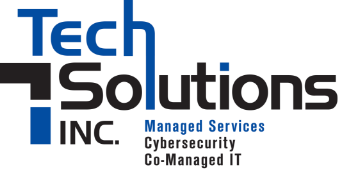By Dan Ayars, Business Development Manager, TechSolutions

Unfortunately in most cases that is just a fantasy; however it is reality when it comes to your Windows server and desktop operating systems. Microsoft continues to make improvements and repairs to their operating systems available for several years after purchase. Yet many people do not take advantage of this benefit. Well if something so sensible isn’t reason enough, let me give you a couple of more reasons why updating your desktop and server operating systems is not only prudent, it’s critical.
Stories about hackers and threats to computers and networks are in the news almost every day. Many of these stories include tips on how to prevent or minimize this from happening to you. Across the board, consistently, one of the recommended tips is to keep your desktop and server operating systems updated. The reason is a majority of the updates Microsoft releases are security updates. Never seen before threats are developed by crafty hackers all the time and Microsoft is constantly refining its operating systems to counter these new threats. In order to take advantage of these improvements, and protect your devices and network, you need to keep your operating systems up-to-date.
Operating systems are also updated to address bugs and shortcomings. Prior to making software available to the public Microsoft will release a beta version of the product for people, primarily IT geeks, to try, experiment and play with. For example, there is a beta version of Windows 10 currently available to download for free and test drive. Microsoft takes the feedback and improves the product, eventually releasing it to the public. However now that it is in the hands of the public you have dramatically increased the number of people using it and the ways it is being used. Not surprisingly more issues come to light and, one way or another, come to the attention of Microsoft. Taking this feedback Microsoft makes improvements to the software, patches as they are known, and eventually makes them available to the public. The end result is an operating that is not good as new, it is better!
Patching desktops and laptops is fairly easy. You can set updates to automatically download and install. If an update causes an issue, which occasionally they do, it can be removed. Patching servers is a different story because they have a more complex operating system and are called on to perform a variety of duties in the IT network. If there is an issue, it could impact the business, software applications or all the devices that work with the server. Knowing the role of the server, it’s current status, what updates to install, etc. and proper preparation are important to the successfully updating a server. There are also things to be checked and tested following the updates to be certain everything is still working properly.
Hopefully I’ve shed some new light on the importance of keeping computers and servers up-to-date for those who do not see this as a priority. And I know there are those of you out there who don’t see it as a priority. More than a few times our techs have worked on client devices that we do not manage and discovered they haven’t been updated in months or even well over a year. Frankly all of us here at TechSolutions are taken aback when we hear that because, as the tech experts so-to-speak, we know the absolute importance of updates. For our PointCare clients this is not a worry because we keep their computers and servers up-to-date. We also perform this service for non-PointCare clients who understand the importance of this.
Regardless of whether we do it or you do, the bottom line is there are several reasons, even beyond what I’ve laid out here, for keeping your operating systems up-to-date. So if this isn’t a priority, I strongly urge you to make it one and sooner rather than later. If you’d like to learn more about having us keep things up-to-date, shoot me an email and I’ll get you the details and pricing.
